Designer: Devereux Emmet (1914)
Location: East Meadow, New York
History: Originally designed by Devereux Emmet in 1914 as one of five courses at the private Salisbury Country Club, Eisenhower Red hosted the 1926 PGA Championship won by Walter Hagen. During the Depression, the Club was forced to sell its courses to the County and Eisenhower Red was the only course to survive. In the 1950s, Robert Trent Jones Sr. designed two additional courses at Eisenhower Park named the White and Blue Courses. The Red Course has undergone numerous changes and significant lengthening over the years and is considered the best course at the Park. It most recently hosted the Champions Tour until 2008.
Conditions: 7/10, Eisenhower Red’s greens are on the slower side, but overall it is in decent shape for a municipal course that receives a lot of play.
Value: 9/10, One of the toughest teetimes in the country, only Nassau County residents can book ahead of time and the course is always packed. It does offer great value, however, at just $42 on weekdays with further discounts available. Non-passholders and non-resident guests will be charged up to $70 for weekend play.
Scorecard:
Tee Par Yardage Rating Slope
Blue 72 7107 74.0 135
White 72 6435 70.9 130
Gold 72 5811 67.0 120
Red 72 5470 71.6 125
Hole Descriptions: Even most casual golfers have heard of Bethpage Black, the world-class Long Island municipal course that’s hosted numerous majors in recent years. Most golfers, however, are unaware that there’s another municipal park just a few miles away that also hosted a major: Eisenhower Park. This is in part because access to the Eisenhower Park courses is very limited for non-Nassau residents, but also because the quality of golf is nowhere near as good.
At the time of writing this, I’ve only played the Red Course at Eisenhower Park, the supposed best course on the property and host of the 1926 PGA. Devereux Emmet gets official credit for the design, but after playing I wondered how much Emmet really remains here, as the course has undergone many changes through the years to stay relevant. As it stands today, Eisenhower Red is a fairly challenging public course at over 7100 yards from the Blue Tees. It is well-bunkered and in good shape but its biggest flaw is being forgettable, as many of these long, tree-lined holes blend together and not much stands out.
When I played, the opening hole was a straightaway 462 yard par 5, but it’s since been shortened to a par 4. This hole is tree-lined and plays downhill on the teeshot before running back uphill on the approach. The most notable feature of this hole is the bunkering near the green, with bunkers on either side short, one left, and one well-short. This green overall slopes back-to-front. I suppose this is stronger hole as a par 4 but it was a fun and reachable starter before.
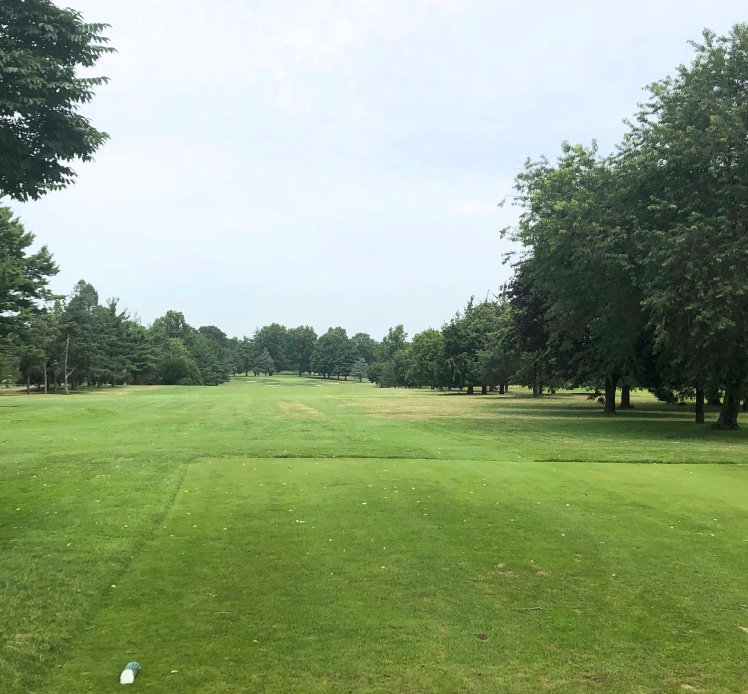
The 2nd hole is apparently either a par 3 or 4 depending on the green but is usually a par 3 playing uphill at 171 yards. A bit of an awkward hole with a green to the left and two fairways, this one-shotter features a kidney-shaped green defended by numerous bunkers well-short.
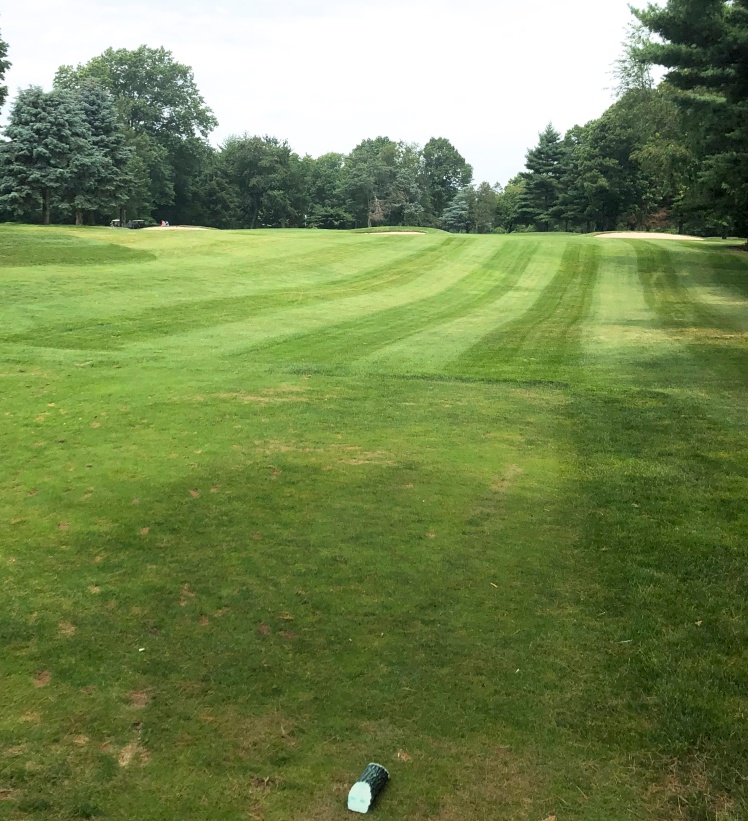
The 3rd hole is another par 5 as a sharp 490 yard dogleg right. Although short on the scorecard, this hole is quite tight with thick trees down either side and bunkers flanking the fairway around 235 yards. This dogleg doesn’t occur until about 280 yards, so only the longest hitters will be able to see this green on their second shot. Numerous bunkers guard this right-to-left sloped green on either side short.
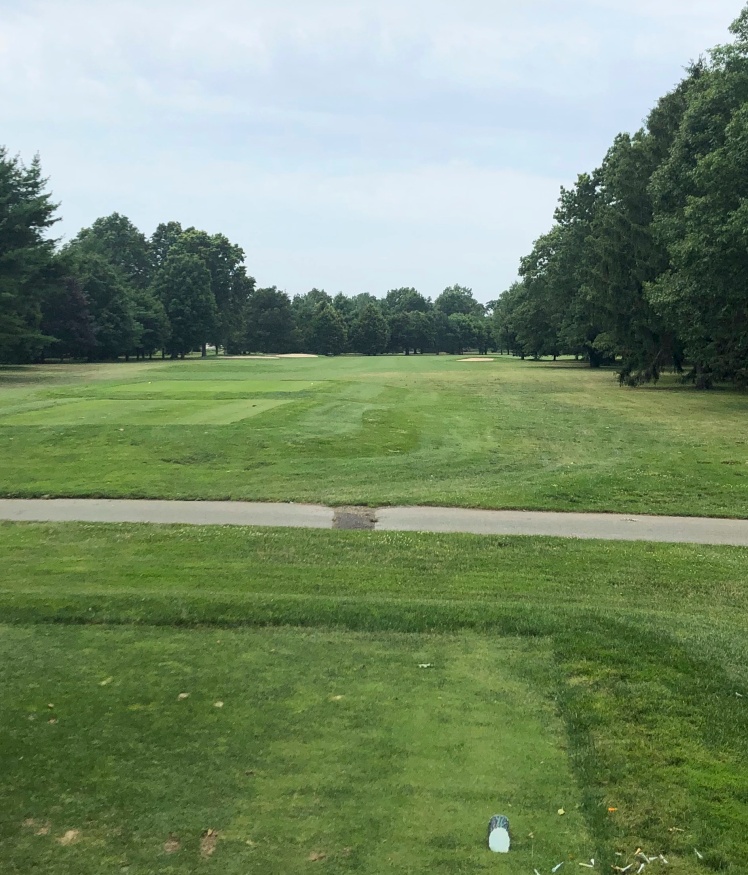
Almost certainly the most difficult hole at Eisenhower Red, the number 1 handicap 4th is a 420 yard sharp dogleg left par 4. Like the previous dogleg, this hole is quite tight and lined by thick trees on either side with OB left. Additionally, two bunkers line the fairway on the right side of the dogleg at just 240 yards. Unless you can cut the corner here, you’ll be left a long approach into a narrow, back-to-front sloped green lined by bunkers on either side. Par is a strong score here.


At 130 yards, the 5th hole is the shortest par 3 on the course and one of my favorite holes. This green has punchbowl-like features and is surrounded on all sides by five bunkers. A good classic par 3.
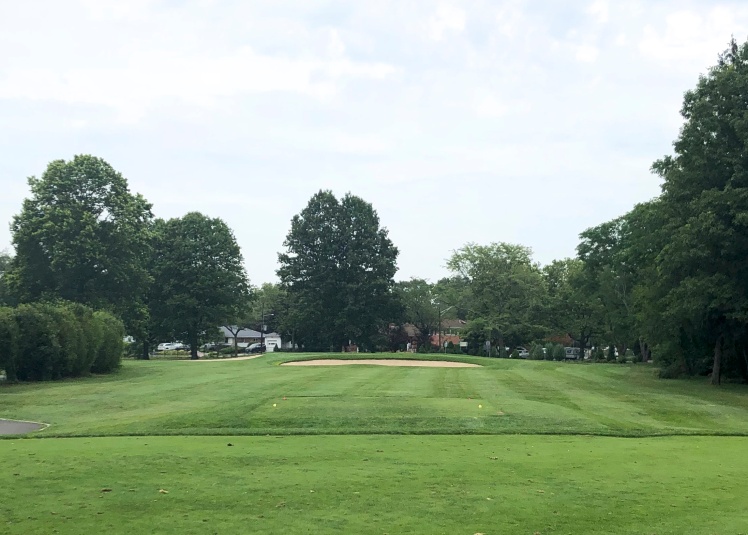
The 6th is another solid hole as a 391 yard dogleg right par 4. Featuring thick trees down either side and bunkers at 170 yards right and 240 yards left, this fairway turns sharply around 245 yards. This green slopes steadily back-to-front defended by a large right bunker and another short left.
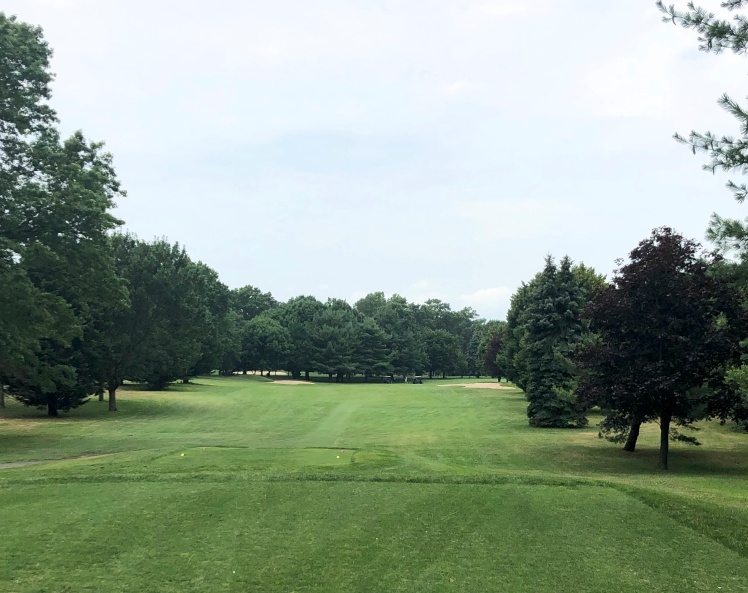
Now a par 5 with a new green, the 7th hole was the longest par 4 on the course when I played at 421 yards. Although on the longer side, there wasn’t much to this hole as it played straight and flat the entire way lined by trees. Accuracy was important here, as big misses were likely lost and minor misses could find bunkers down the right at 240 yards or left at 300 yards. This green was flanked by bunkers on either side and featured slopes on either edge that pushed balls towards the center.
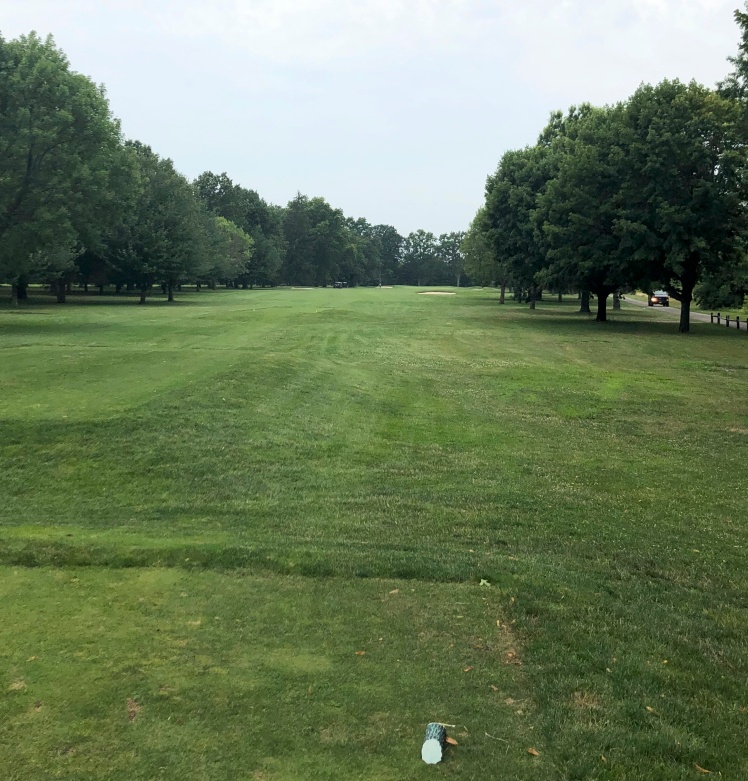
The 8th runs parallel to the preceding hole as another flat, straightaway par 4. At 342 yards, this hole is fairly boring on the teeshot besides a large bunker down the left at 240 yards. The redeeming feature of this hole is the six bunkers that surround a small, undulating green.
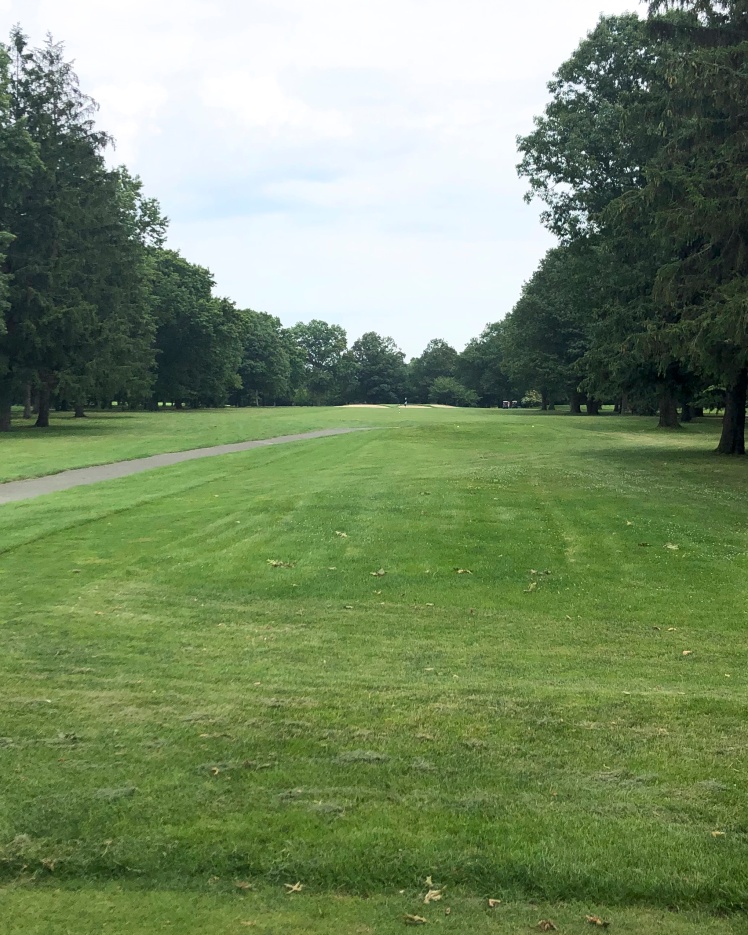
At 301 yards, the 9th hole is the shortest par 4 on the course and reachable for longer hitters. This teeshot plays into a valley to a generous fairway without much danger. Those who lay back off the tee will be left an uphill approach into a narrow, back-to-front sloped green defended by numerous bunkers on either side.
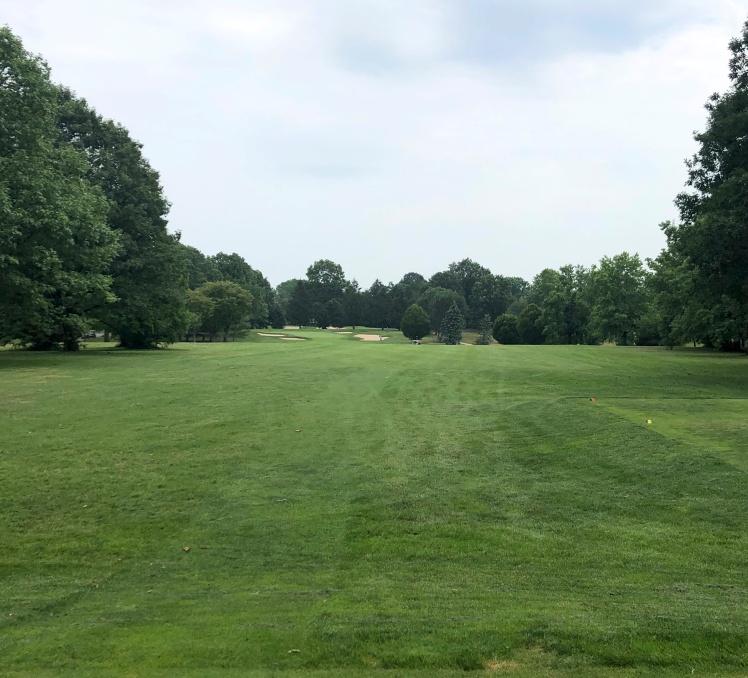
The 10th is one of the tougher holes on the course as a 416 yard dogleg right. Trees line both sides of the fairway and a large bunker down the right around 240 yards marks the beginning of the dogleg. This green slopes back-to-front and is lined by bunkers on either side.
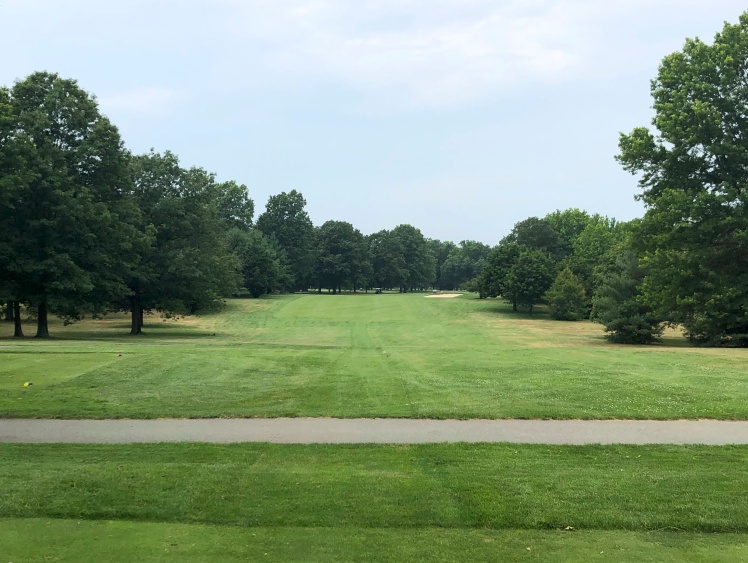
The 11th hole is really forgettable as a straightaway, dead flat 375 yard par 4. There’s essentially nothing memorable about this hole, which features a wide, flat fairway leading to a flatter green lined by bunkers.
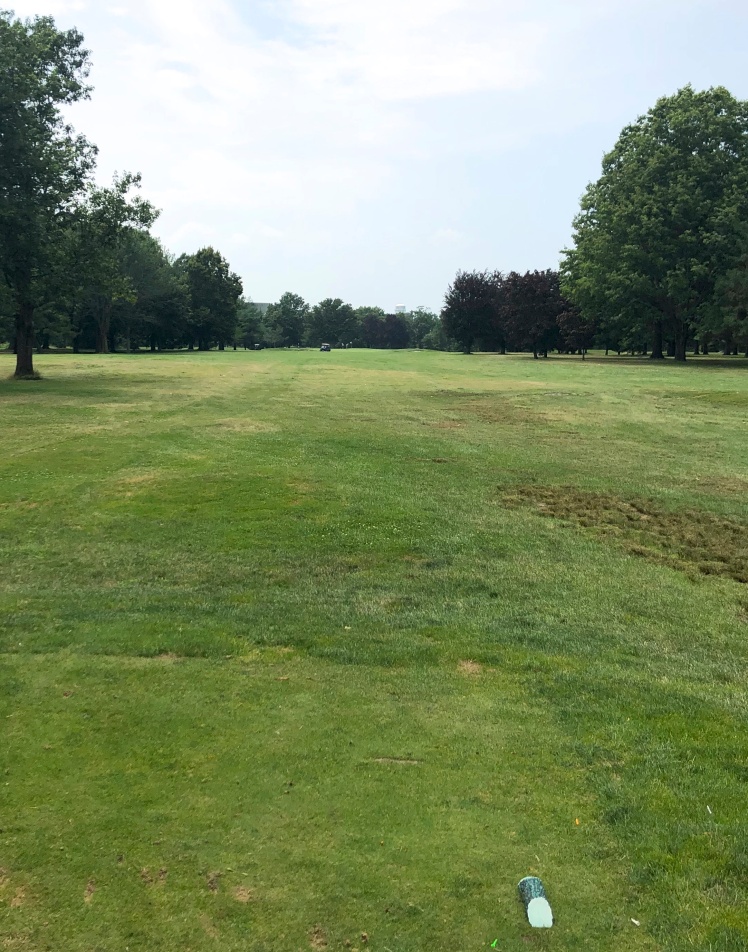
At 465 yards, the 12th hole is a short par 5 featuring a generous, tree-lined fairway also defended by two right bunkers at 215 and 260 yards. Reachable for longer hitters, I enjoy the bunkering as you near this green, with a large midline bunker about 70 yards short and bunkers on either side until you reach a pretty severe back-to-front sloped putting surface.
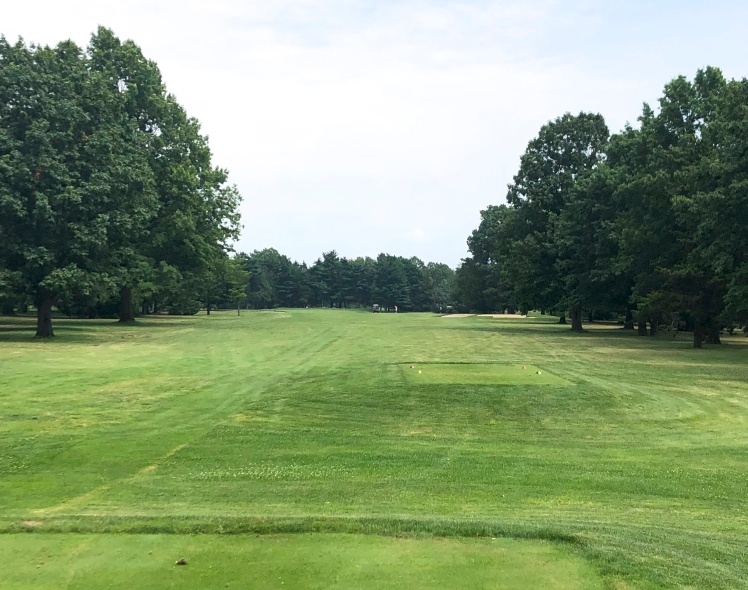
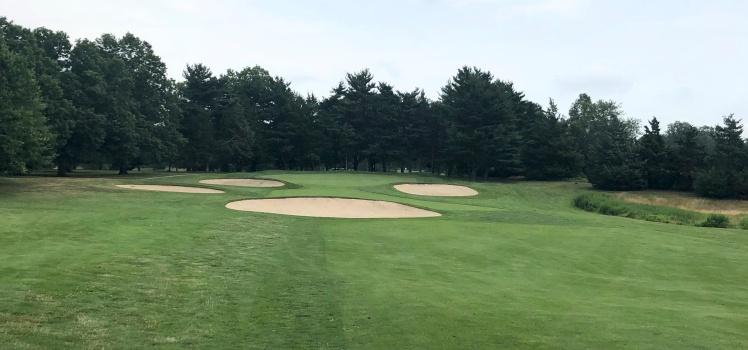
The longest and toughest par 3 at Eisenhower Red, the 13th plays uphill at 193 yards over marsh to a flatter green defended by two large bunkers short.
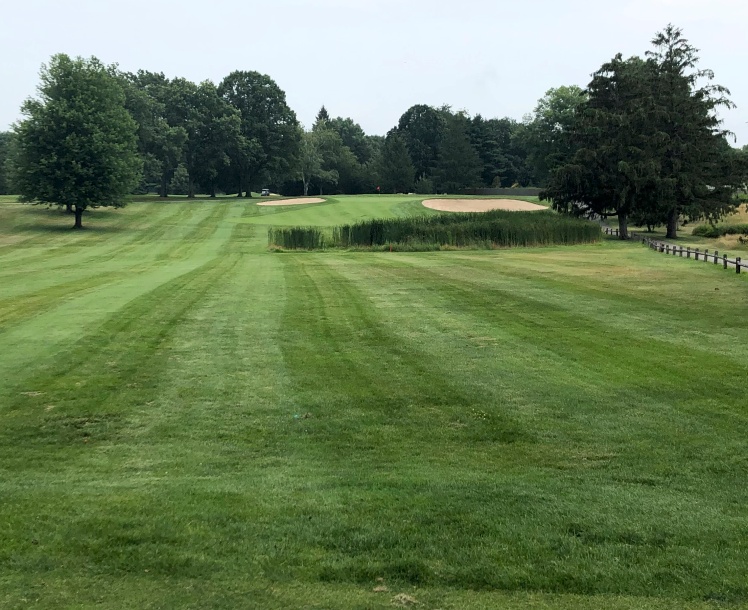
The 14th hole is probably my favorite on the course as a 370 yard dogleg left par 4. Featuring an attractive teeshot over a brief hazard, this fairway is fescue-lined for the first 210 yards before turning slightly left with large bunkers down either side. From here, this approach plays towards a back-to-front sloped green lined by bunkers on either side.
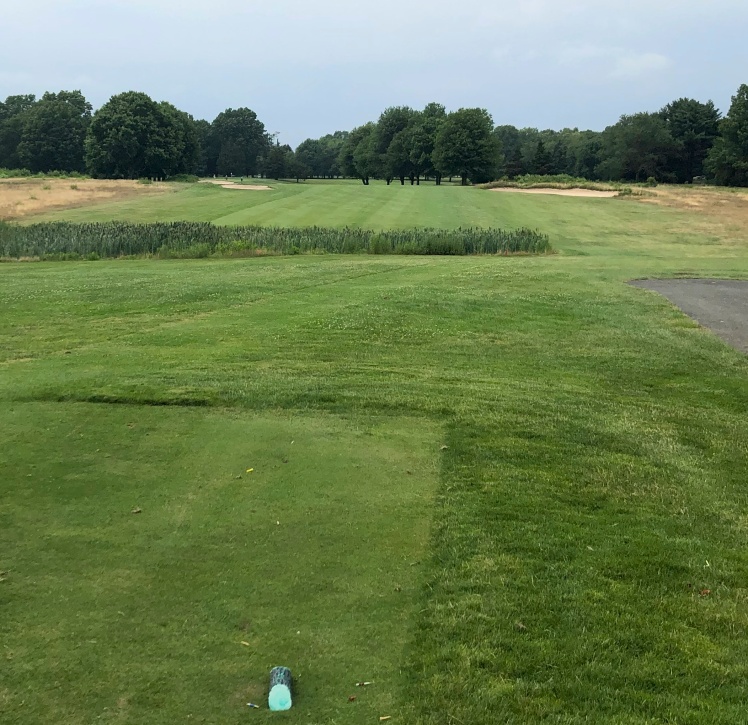
The 15th hole is another tough one as a 402 yard par 4. Playing straightaway and tree-lined, this teeshot is fairly boring and all the excitement here comes on the uphill approach over water. This green slopes overall left-to-right with a large false front just beyond the water and bunkers short on either side.
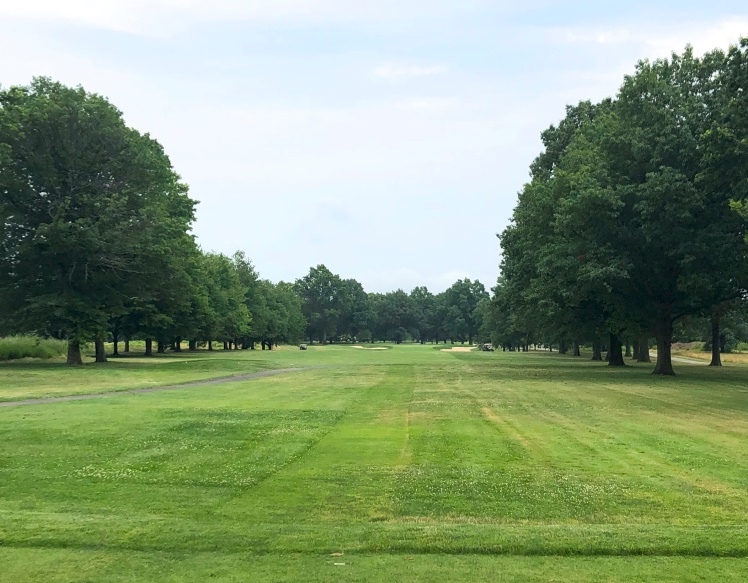
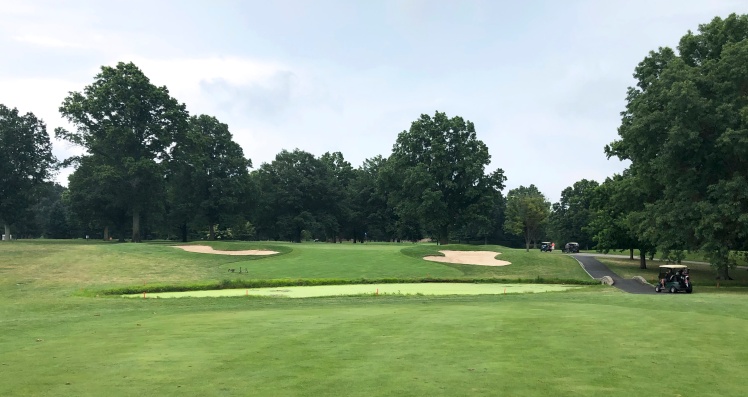
The 16th is the final par 3 on the course at 150 yards. A nice enough one-shotter and somewhat similar to 5, this green slopes back-to-front surrounded by numerous bunkers short and on either side.
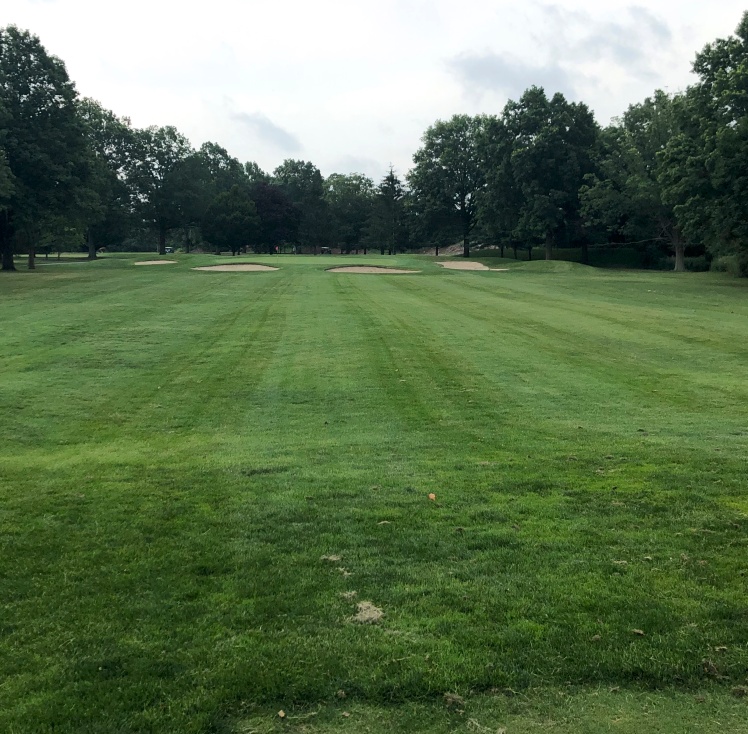
Eisenhower Red closes in demanding fashion with two of the longest holes on the course beginning with the 517 yard par 5 17th. Playing straight and tree-lined for much of its length, bunkers line this fairway as well at 260 yards left and 225 yards right. This left-to-right sloped green is tucked to the left and defended by numerous bunkers on all sides.
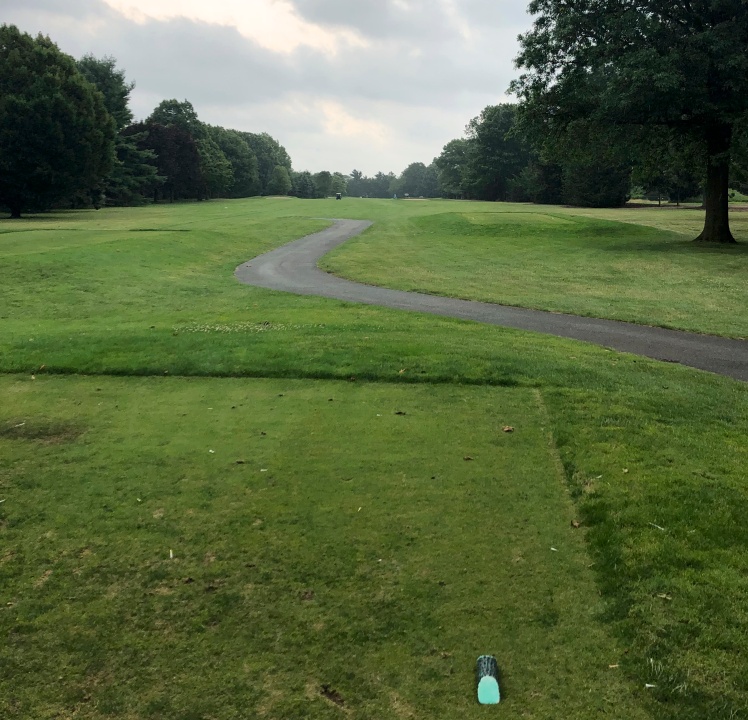
The Red’s closing hole is a quality 419 yard par 4 running uphill and semi-blind to a generous tree-lined fairway. While there’s not much danger on this teeshot, golfers will be left a longer approach into an undulating green lined by bunkers on either side.
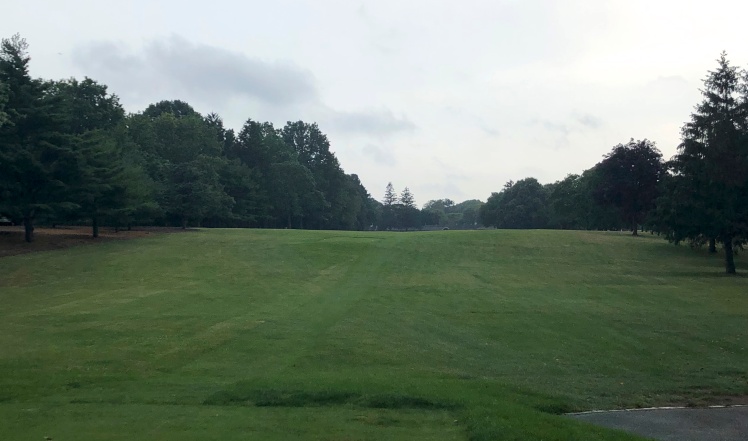
General Comments: Eisenhower Park is a very large park but amenities in terms of golf are limited, with a bare bones clubhouse and driving range which isn’t close to the Red Course. Think Bethpage but much worse. Like all municipal courses in the area, pace of play can be painfully slow here.
Verdict: A solid and challenging municipal course that hosted the 1926 PGA, Eisenhower Red is worth a play for golf history enthusiasts and locals but is overall on the boring side.